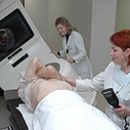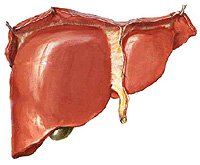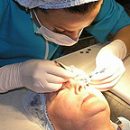Despite the minor sizes of the anal channel, malignant tumors arising in it have the most diverse structure. Anal channel tumors are a relatively rare disease and frequency of them amounts to 1-6% of all malignant tumors of the rectum.
Content
Anatomy of the rectum
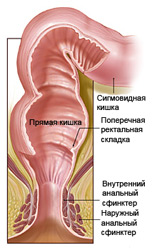 Rear Passage (Anal Canal) is the terminal colon and digestive tract. Anal channel is highlighted as an independent department of the digestive tract, due to the characteristics of the anatomical structure, specific functions, the most important of which is the retention of cartoons and gases.
Rear Passage (Anal Canal) is the terminal colon and digestive tract. Anal channel is highlighted as an independent department of the digestive tract, due to the characteristics of the anatomical structure, specific functions, the most important of which is the retention of cartoons and gases.
The length of the anal canal varies depending on the individual characteristics and the physiological state of the anal sphincters, gender, age, weight and growth of patients and averages 3-4 cm. Despite the minor sizes of the anal channel, malignant tumors arising in it have the most diverse histological structure. Anal channel tumors are a relatively rare disease and frequency of them amounts to 1-6% of all malignant tumors of the rectum.
In the clinical classification in patients with tumors of the anal channel use a system in which the presence of a primary tumor and its dimensions, the presence or absence of lesion of lymph nodes and remote metastases are estimated.
Depending on the spread of the tumor process, the stage of the disease is specified – from 0 to iv, which is important for planning treatment and determination of the forecast (outcome) of the disease.
PlateLock carcalete cancer
Is the most frequent and most typical tumor and is almost half of all the tumors of the anal canal. Flake carcury Cancer meets in women 4-5 times more often than men. The cause of such a prevalence is chronic diseases of the area of the rear pass in women, perhaps the features of sexual life, infection with the human papilloma virus.
Diagnostics
The flat-cell cancer of the anal canal has bright symptoms. It is important to note that patients with asymptomatic current practically do not occur.
The most frequent and earliest symptom of flat-belling cancer of this localization is an admixture of blood scarlet in feces. Less frequently observed such discharge from the rear passage as mucus, pus.

Less often such symptoms such as constipation, tenesms (calling), feeling of the foreign body in the rear pass.
Increased body temperature is noted in patients with tumor decay and pronounced inflammation around it. In a third of patients with a common process, such symptoms are observed as weakness, weight loss, etc.
Predominate cross-shaped and ulcer-infiltrative, less often – Polypusoid and diffuse-infiltrative form of cancer growth.
The tumor dimensions range from 0.5 to 15 cm and in third of the patients are more than 5 cm in diameter. It should be emphasized that more than 30% of patients the lower edge of the tumor is determined to the eye with the usual inspection of the rear pass area. Despite the bright clinical picture, simplicity and availability of diagnostics in a significant part of patients, often cases of diagnostic errors. In the initial appeal to the doctor in more than 30% of cases, an erroneous diagnosis is established (paraproctitis, the crack of the rear pass, the groove or femoral hernia, polyp, papilloma, crotch gland, prostate adenoma).
Only about 30% of patients appeal to the doctor on acceptable terms – In the first month after the emergence of initial symptoms of the disease. Almost 40% of patients seek a doctor in six months, and 5% - a year after the appearance of the first symptoms.
Late appeal is usually due to long-term hemorrhoids, as well as a feeling of false shame. In this regard, many patients come to the clinic with common stages of the disease.
The plane-cell cancer of the anal canal has properties to grow into the surrounding organs and fabric and metastasis in lymph nodes . Most often, inguinal and olochekychnyy lymph nodes are affected. Remote metastases (in the lungs and liver) are detected in 15% of patients.
Treatment of flat-stacked cancer
The main methods for the treatment of cancer of the anal channel is surgical and radiation method. When applying only the radiation method, 5-year survival is about 7%, and one surgical method – almost 40%. The frequency of recurrences in the first group is 85%, and in the second – 62%. Thus, the operation is a more radical method for the treatment of anal channel flat-cell cancer compared to the radiation method.
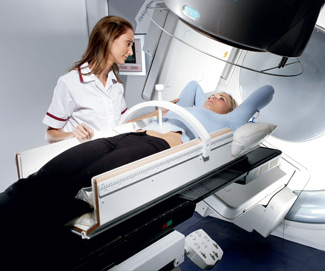 The most promising is the method of combined treatment of anal channel cancer using radio-formifiers (local microwave hyperthermia). Such a technique allows 25% of patients to conduct organ-breaching treatment (t.E. without removal of the rectum). 5-year survival of patients at the same time is 75%, and relapses arise 4 times less often than after surgery and 5.5 times less often than after radiation treatment.
The most promising is the method of combined treatment of anal channel cancer using radio-formifiers (local microwave hyperthermia). Such a technique allows 25% of patients to conduct organ-breaching treatment (t.E. without removal of the rectum). 5-year survival of patients at the same time is 75%, and relapses arise 4 times less often than after surgery and 5.5 times less often than after radiation treatment.
A more efficient and gentle method of treatment of the anal channel plane cell is the use of irradiation in combination with local hyperthermia, chemotherapy (cisplatin, bleomycin) and antioxidants (retinol, vitamin E, pentoxifyllin, ascorbic acid, cytochrome). In the absence of a pronounced effect (reduction of the tumor in less than 75%) operation is performed.
This treatment technique allows you to achieve the complete disappearance of the tumor in 60% of patients, and 5-year survival rate reaches more than 70%.
Thus, the most effective is the method of thermoradiochemical therapy of the anal channel of the anal canal. It is well tolerated by patients quite well, does not give heavy complications, allows for a significant part of patients to conduct organ-brewing treatment, t.E. Save an anal sphincter and a natural passage (passage) of hiding masses.
Melanoma Anal Canal
About 18% of all malignant tumors of the anal canal and almost 1.5% melanoma of all localization.
The clinical picture and the diagnosis of melanoma of the anal channel is similar to that of such a flat-stacked cancer of this zone. From diagnostic procedures should be especially highlighted on biopsy (taking a piece of tumor for research). It is well known that the biopsy of melanoma is strictly contraindicated! However, the biopsy of the tumor is carried out practical to the hospitalization to the hospitalization, which significantly worsens the forecast (outcome) of the disease.
Melanomes of the anal canal, as a rule, pink color, not black, like on the skin, are not pigmented on the eye. Biopsy contributes to the generalization of the tumor process and worsens the remote results of treatment.
At the slightest suspicion of the melanoma of the anal channel, less traumatic, but diagnostically equally informative method should be used – Cytological examination of prints-prints taken from the surface of the tumor.
The locally common forms in the melanoma of the anal canal are much less common than with flat-flossing cancer, but the melanomas of this localization are different to early generation of the process and remote metastasis.
Local recurrence after local excision of small melanomes is rare. This allows for small exophytic (growing dusts) melanomes, especially on the legs to use a sphincter-saving method of treatment – Cryodestruction (low temperatures).
When tumor sizes less than 3 cm, the use of cryodestruction is an adequate, radical treatment method. At the same time, local recurrence in these patients is not marked.
The long-term results of treatment for melanomes of the anal canal are mainly unsatisfactory: 5-year survival is 17%.
Nepphelial malignant tumors of the anal canal
About 8% of all malignant tumors of the anal zone and have the structure of leiosarcomas, robbyosarcomas, Svannomes, and others.
All these tumors are little sensitive to irradiation and chemotherapy.
The radical method of treatment is the operation (abdominal and crotch extirpation (removal) of the rectum).
Local excision of such tumors is not an adequate method of treatment and leads to relapse (re-growth) tumor.

